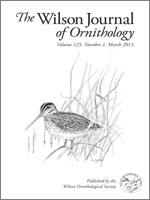We studied Black-necked Cranes (Grus nigricollis), a Globally Vulnerable species and the only alpine breeding cranes in the world, to test whether and how predation vulnerability and flock size affect vigilance. Crane flocks were defined as high predation vulnerability (parents with juveniles) and low predation vulnerability (adults without juveniles). Both predation vulnerability and flock size influenced vigilance of Black-necked Cranes. High predation vulnerability flocks were significantly more vigilant than low predation vulnerability flocks at both the group scan level (t = 2.379, df = 66, P = 0.02) and group scan frequency (t = 3.208, df = 66, P = 0.002). Predation vulnerability and flock size affected vigilance in Black-necked Cranes (ANCOVA: group scan level, flock size: F = 13.013, P = 0.001, predation vulnerability: F = 7.728, P = 0.007); group scan frequency, flock size: F = 13.873, P < 0.001, predation vulnerability: F = 10.882, P = 0.002).
How to translate text using browser tools
1 March 2013
Vigilance in Black-Necked Cranes: Effects of Predation Vulnerability and Flock Size
Feng Xu,
Ma Ming,
Weikang Yang,
David Blank,
Peng Ding,
Tong Zhang
ACCESS THE FULL ARTICLE
Arjinshan National Nature Reserve
group scan frequency
group scan level
group size effect
Grus nigricollis





